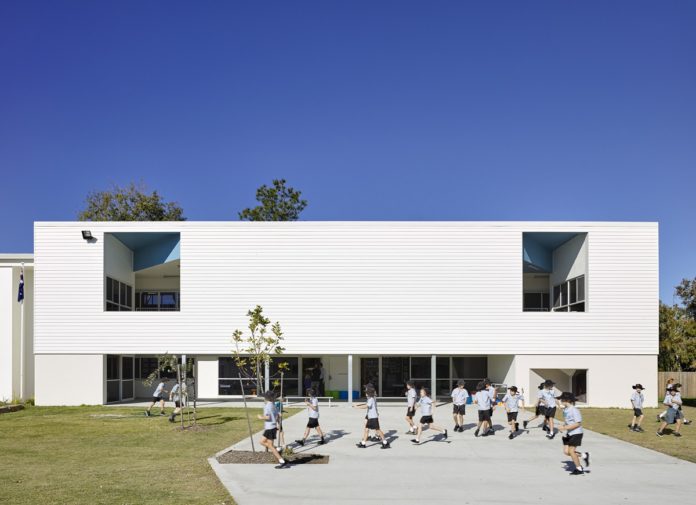THIS WEEK we catch up with architect David Twohill from Pat Twohill Designs to discuss the inspiration and story behind the St Ambrose Catholic Primary School at Pottsville.
The building was recognised at the Australian Institute of Architects’ 2017 Gold Coast/Northern Rivers Regional Architecture Awards held on Saturday, March 4, on the Gold Coast.
Pat Twohill Designs in association with Twohill and James was recognised with a Regional Commendation for the St Ambrose Primary School design.
The Weekly spoke to David Twohill about the inspiration behind the school design and what considerations were made when designing learning spaces.
“The school defers to its setting. Learning areas were imagined as outdoor rooms that encourage students to engage with nature,” Mr Twohill said.
“When designing a school it is important to consider the constant and rapid changes in pedagogy (teaching).
“Large open plan learning environments need to be balanced by smaller and more intimate spaces for individual reflection and as places to retreat.
“It is also important to acknowledge the social aspect of education where the school needs to be planned to embellish a holistic approach to learning; both social and academic.”
Mr Twohill the said St Ambrose School design was centred around the Diocese need to create open spaces with an emphasis on community.
“St Ambrose Primary School was the first new school built by the Diocese of Lismore in 20 years,” he said.
“The school was master planned as a three stage development; Stage 1 opened in 2015 and design work commenced immediately upon opening for stages 2 & 3 to be completed in late 2016.
“The design for St Ambrose Primary School attempts to address current and future shifts in pedagogy by creating a variety of indoor and outdoor spaces for learning with an emphasis on both areas for individuals/small groups and larger spaces for gathering.
“The buildings are arranged around a central courtyard that establishes a school identity and sense of community. The courtyard encloses the principal territory for play and provides children with a protected area for social interactions.
“The arrangement of buildings on the site captures an existing landscape of banksia trees that provide amenity in the form of shady areas for play, structure that informs occupation and social interactions and surrounds children and staff with the daily presence of nature.
“The materiality of the buildings are expressive of a traditional weatherboard schoolhouse or coastal beach shack.
“However, the buildings are institutional in scale and form. Colour is used selectively to highlight openings and edges to contribute to the legibility of the school by creating subtle differences across each building and to provide moments of discovery and delight to encourage creativity, exploration and interaction.”
Mr Twohill said the feedback from parents has been extremely positive with parents and students enjoying the open nature of the learning environments encourage children to engage with the outdoors.
He said the entry in the awards was a great way to share works with the general public and to give them a greater insight behind the design process.
“It is important to share work and ideas with architects and the general public,” he said.
“The Australian Institute of Architects Awards are a great platform that encourages architects to share and discuss their work and advance the profession.”
